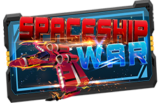Understanding NFTs: A Primer
What are NFTs?
NFTs are unique cryptographic tokens that represent ownership of a specific asset or piece of content. Unlike cryptocurrencies such as Bitcoin or Ethereum, which are interchangeable and hold the same value, each NFT is distinct and cannot be exchanged on a one-to-one basis. This uniqueness makes NFTs perfect for representing in-game assets, virtual items, and collectibles.
How do NFTs work?
NFTs are built on blockchain technology, most commonly on the Ethereum blockchain. The blockchain ensures that each NFT’s ownership and transaction history are secure and transparent. This creates a trustless environment, reducing the possibility of fraud or duplication. NFTs can be bought, sold, and traded on various digital marketplaces.
Advantages of NFTs in Gaming
The incorporation of NFTs in gaming has brought several advantages. It empowers players with true ownership of virtual assets, allowing them to trade or sell items as they see fit. This new model also introduces scarcity and exclusivity, making in-game items more valuable and desirable, ultimately enhancing the gaming experience.
NFTs and Digital Ownership
Empowering True Ownership
Traditionally, in-game assets were owned and controlled by the game developers. However, with NFTs, players gain real ownership of their virtual possessions. This shift has transformed the gaming landscape, as players can now have a sense of permanence and investment in the digital worlds they inhabit.
Scarcity and Exclusivity in Gaming
NFTs introduce scarcity to the gaming world. Developers can create limited edition items, making them highly sought-after collectibles. Scarcity and exclusivity drive demand and add value to in-game assets, creating a vibrant secondary market where players can buy, sell, and trade their NFTs for profit.
Enhancing In-Game Assets with NFTs
Collectibles and Virtual Items
NFTs have breathed new life into the concept of in-game collectibles. Players can own and showcase rare, unique items, creating a sense of prestige among their peers. These collectibles can also hold historical significance within a game’s universe, adding depth and lore to the gaming experience.
Tradable and Interoperable Assets
NFTs are not confined to a single game or platform. They are interoperable, meaning that players can use their assets across different games or platforms that support the same standard. This portability opens up exciting possibilities for players to carry their virtual wealth and achievements between different gaming ecosystems.
Play-to-Earn: Gaming for Profit
Earning Real-World Value
NFTs enable the “play-to-earn” concept, where players can earn valuable rewards and assets by participating in games. These assets hold real-world value, and players can convert them into cryptocurrencies or fiat money. This has given rise to a new category of gamers who view gaming as a potential source of income.
Redefining the Gaming Economy
The integration of NFTs has redefined the gaming economy by blurring the lines between virtual and real-world assets. Players can now invest time and effort into gaming, knowing that their achievements can translate into tangible rewards. This has attracted a diverse audience, including gamers and investors, driving further growth in the industry.
NFT Marketplaces and Gaming
Exploring Virtual Marketplaces
NFT marketplaces provide a platform for players to buy, sell, and trade their virtual assets. These marketplaces operate on blockchain technology, ensuring secure and transparent transactions. Some popular NFT marketplaces have gained immense popularity, creating a thriving ecosystem for gamers and collectors.
Security and Authenticity Concerns
The rise of NFTs has also raised concerns about security and authenticity. With high-value assets changing hands, there is a need for robust security measures to protect players from potential scams or hacks. Developers must prioritize the safety and privacy of their users while maintaining the integrity of the gaming experience.
Blockchain Technology and Gaming
Decentralization and Transparency
Blockchain technology promotes decentralization, removing the need for central authorities in managing in-game assets. This democratized approach ensures that players have full control over their virtual possessions. Moreover, the transparent nature of blockchain provides an audit trail for all transactions, fostering trust between players and developers.
Solving Gaming’s Persistent Issues
Blockchain technology has the potential to address long-standing issues in the gaming industry, such as item duplication, fraud, and ownership disputes. By utilizing smart contracts and blockchain-based authentication, these problems can be effectively mitigated, creating a fairer and more enjoyable gaming environment.
Integrating NFTs in Mainstream Gaming
AAA Games and NFT Adoption
While NFTs have gained significant traction in the gaming world, their integration into AAA (Triple-A) games presents exciting opportunities for mass adoption. Major game developers can leverage NFTs to introduce new revenue streams, engage players on a deeper level, and attract a broader audience to the blockchain gaming landscape.
Challenges and Future Outlook
Despite the transformative potential of NFTs, challenges remain. Issues such as scalability, high transaction fees, and environmental concerns need to be addressed for widespread adoption. Nevertheless, the gaming industry is poised to continue its journey towards embracing NFTs, unlocking new dimensions of gameplay and community interaction.
The advent of NFTs has sparked a game-changing connection between the gaming industry and blockchain technology. Players now have true ownership of their in-game assets, and the concept of play-to-earn has turned gaming into a profitable venture. The NFT revolution has opened up endless possibilities, enhancing the gaming experience and shaping the future of interactive entertainment.
